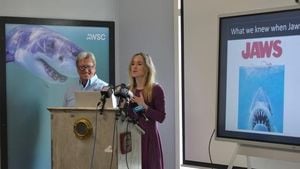On Thursday, June 19, 2025, a widespread internet outage swept across the United States, disrupting service for tens of thousands of users and highlighting the critical reliance on broadband connectivity in modern life. The outage primarily impacted three major providers: CenturyLink, Quantum Fiber, and Brightspeed, with over 45,000 users reporting interruptions nationwide.
CenturyLink, owned by Lumen Technologies and operating under the Lumen brand since 2020, bore the brunt of the disruption. More than 35,000 CenturyLink customers experienced service issues, marking the most severe impact among the affected providers. Quantum Fiber, a fiber internet service brand originally part of Lumen Technologies but in the process of being acquired by AT&T in a $5.75 billion deal involving approximately 1 million subscribers, reported over 17,000 users facing outages. Brightspeed, which now serves 20 states formerly under Lumen's footprint, had more than 3,000 reports of service problems during the same timeframe.
The outage lasted roughly two hours and 33 minutes, according to outage tracking data, making it one of the more significant telecommunications disruptions in recent memory. The geographic reach was extensive, affecting users across numerous states and cities, including Denver, Colorado Springs, Seattle, Atlanta, Houston, Phoenix, Los Angeles, and many others. In Denver and throughout Colorado, the impact was especially pronounced, as Quantum Fiber has been aggressively expanding its ultra-fast broadband connectivity in the region, serving hundreds of thousands of residents and small businesses.
Local users in Denver took to social media platforms like Reddit to report the outage and share their experiences. One Reddit user humorously noted that they were "too lazy to call" customer service and found it "hilarious" that CenturyLink’s websites were inaccessible even via cellular data during the incident. The community also rallied to help each other, with tech-savvy users posting detailed instructions on how to temporarily restore connectivity by changing DNS settings.
The root cause of the outage was quickly identified as a DNS (Domain Name System) server issue. A notably resourceful 14-year-old Reddit user provided step-by-step guidance on switching DNS settings to alternative providers such as Google (8.8.8.8 and 8.8.4.4) and Cloudflare (1.1.1.1 and 1.0.0.1), which allowed many users to bypass the problem and regain internet access before official services were fully restored.
Social media was abuzz with both frustration and humor. A Twitter user advised: "CenturyLink Internet Outage If your CenturyLink internet is up but websites won’t load, it’s likely a DNS issue. Quick fix: Change your DNS to Google or Cloudflare." Another expressed broader concerns about society’s dependence on the internet, lamenting that after a long day in the sun, returning home to a non-functional household due to an internet outage was a stark reminder of how critical connectivity has become.
Despite speculation from some users about a possible cyberattack causing the outage, the evidence pointed to a technical malfunction rather than malicious activity. The DNS-based fix and the nature of the disruption aligned with previous CenturyLink outages, such as the August 2020 incident caused by a BGP routing mistake, which was also confirmed not to be security-related.
CenturyLink responded to the incident with an official statement describing the outage as "a network routing issue that caused a temporary service disruption for some customers." Spokesperson Matt Villarreal confirmed that "All services have since been fully restored," acknowledging the importance of connectivity for their customers. However, the company’s initial silence during the outage drew criticism from users, with some noting the absence of timely updates and the generic nature of responses on CenturyLink’s social media channels.
The outage’s impact extended beyond individual inconvenience, significantly disrupting businesses in Denver and Colorado reliant on Quantum Fiber’s services. Work-from-home employees reported lost productivity and income concerns, underscoring the vital role that reliable internet plays in modern professional life. The incident highlighted the necessity for businesses to maintain redundant internet connections to safeguard operations against such disruptions.
At the same time, the outage occurred amid major changes in the telecommunications landscape. In May 2025, AT&T announced its acquisition of Lumen Technologies’ home fiber business, including the Quantum Fiber brand, affecting about 1 million customers nationwide. This transition adds another layer of complexity to the broadband market, especially in competitive regions like Colorado, where Quantum Fiber has been expanding aggressively.
By the evening of June 19, service had been restored for the vast majority of affected users. Quantum Fiber’s website, which had been down during the outage, came back online, and customers were able to check service status through official tools. Nonetheless, the episode served as a stark reminder of the fragility of internet infrastructure and the widespread consequences when it falters.
In the end, the June 2025 internet outage was a wake-up call for providers and consumers alike. It showcased the resilience of alternative DNS solutions and the power of community-driven troubleshooting, but also exposed vulnerabilities in critical infrastructure. As broadband providers like CenturyLink and Quantum Fiber continue to evolve under new ownership and expand their footprints, ensuring reliable, transparent service will be essential to maintaining customer trust and meeting the demands of an increasingly connected society.





